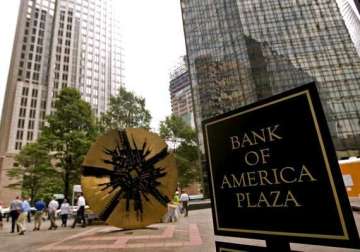Mumbai: Foreign brokerages BofA-ML and UBS expect the RBI to ease interest rates next year even as they anticipate the US central bank to be hawkish in its monetary policy outlook.
American brokerage Bank of America Merrill Lynch today said Fed action will have no impact on the monetary stance of the Reserve Bank in cutting rates to the tune of 75-100 basis points starting January next, even if Fed chair Janet Yellen hikes (rates) from September 2015.
Swiss brokerage UBS said it sees the easy money policy regime beginning mid-next year and moving on to an up to 200 bps lower interest rates from 2016. "...spreads (between Indian and US rates) can narrow and hence Indian bond yields can come down despite US rates going up," it added.
RBI on the last policy announcement on August 5, when it left the key rates unchanged yet again, had hinted at the impact of the US Fed tapering as one of the reasons for holding the rates, the other being poor monsoon and sticky inflation.
"We believe that RBI will begin cutting policy rates by 75-100 bps from January, to revive growth even if Fed tapers off," the Bank of America Merrill Lynch report said.
UBS, on the other hand, sees RBI holding rates till late FY15 as it would want to ensure that decline in food price inflation is sustained and also it will want to have a period of positive real rates to encourage domestic savings.
But from late 2015 onwards it sees up to 200 bps reduction in rates.
RBI has laid out a glide path for CPI inflation, charting disinflation to 8 per cent in January 2015 and 6 per cent in January 2016, UBS said.
"Only as it becomes more certain in the H2 of FY15 that its glide path goal of 8 per cent inflation by January 2015 may be beaten, do we think the central bank will offer a token 25 bps repo rate cut," UBS said in a report adding once on target, it could go an reduce the rates by up to 200 bps.
BofA-ML said although the Fed will fully taper by December, the Federal Reserve chair Janet Yellen sees important cyclical factors in the data, warranting still easy policy.
According to BofA-ML report, monetary policy has turned asynchronous between developed markets and emerging markets, especially in India, in recent years.
During the last Fed tightening cycle in 2004, the rate differential was 350 basis points to begin with. The RBI effectively began tightening in October 2005 when the differential narrowed to 125 basis points.
The overnight rate differential, at 800 bps now, is already well above the average, BofAML said.
Rate hikes are also a double edged sword in the Indian case as the FII equity portfolio is far larger than FII debt portfolio, it said.
"While rate hikes could attract FII debt investors per se, they also drive out equity investors who play growth," the report added.
BofA-ML said it is high foreign exchange reserves rather than the rate differential that holds the key to rupee stability.
The report said the RBI has to buy $80 billion to ensure eight-month import cover by March 2016. During May-June, the apex bank has already bought $28 billion in forwards market.
"We expect the RBI to buy at above 58 levels, assuming that the greenback trades at 1.30/euro," the report said.
It further said the Fed tightening will likely contain 'imported' inflation by stabilising commodity prices.
Latest Business News
